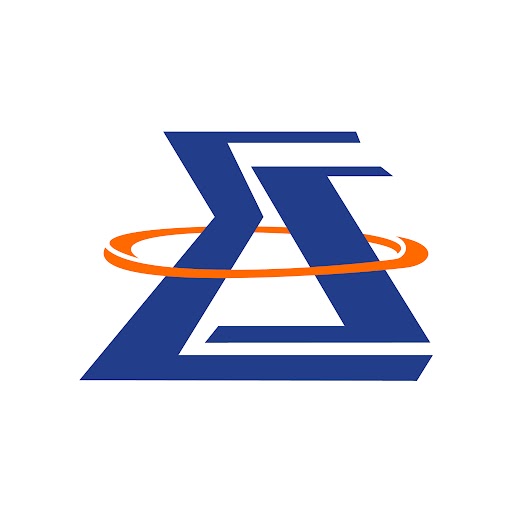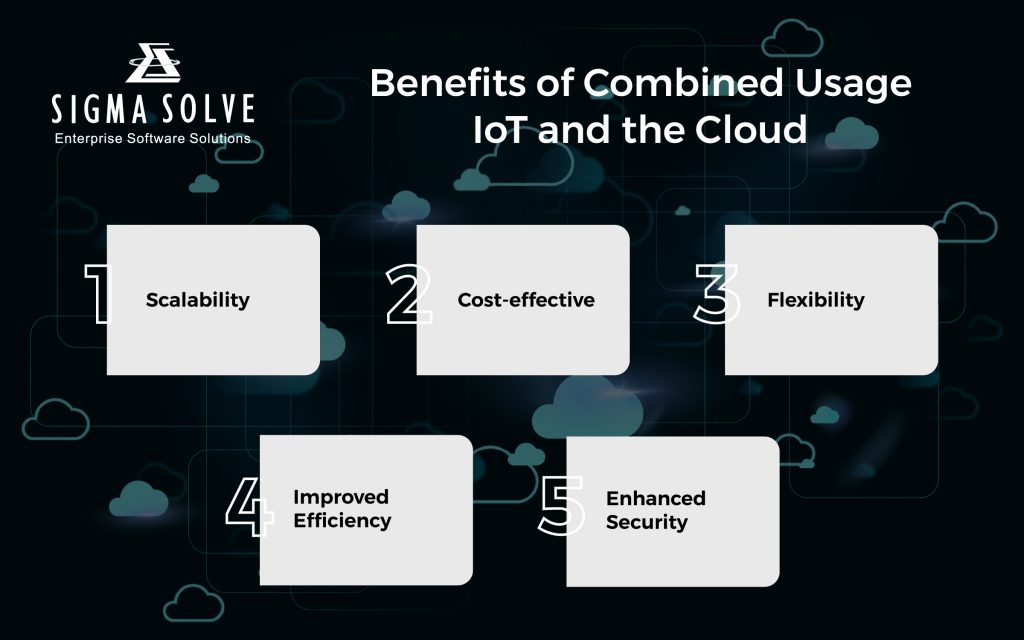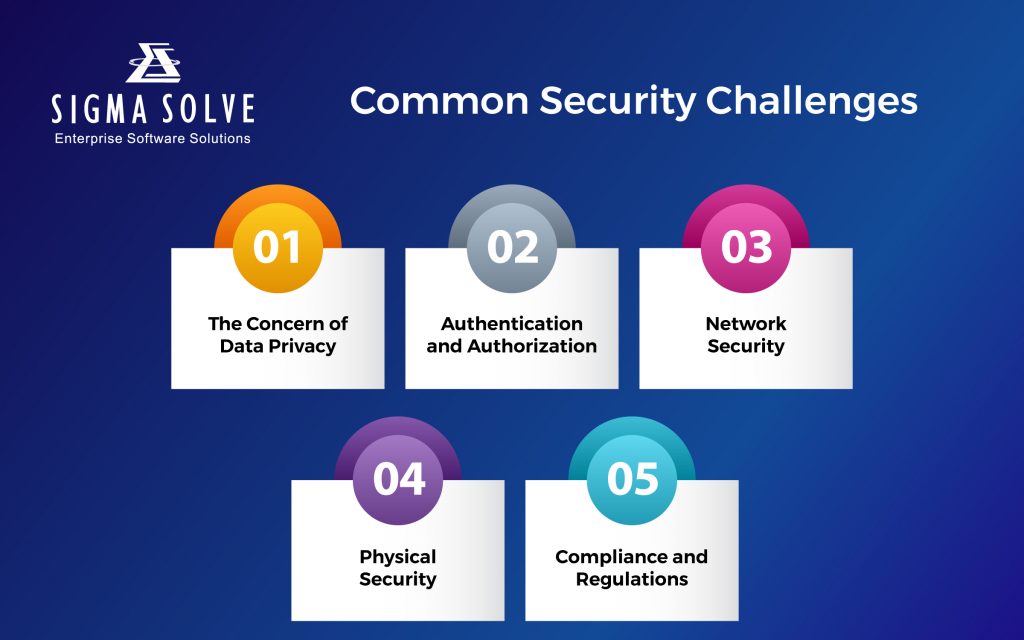IoT app development is transforming industries, from manufacturing to healthcare, by providing real-time insights and automating processes. But, to use the full potential of IoT, organizations need a reliable, scalable, and secure infrastructure to manage the massive data generated by connected devices. As a result, Cloud Computing comes in as a primary source of IoT Solutions as an enabling technology.
In this blog, we will be exploring many aspects related such as the role of cloud computing in IoT, the benefits of combined usage of IoT and the cloud, common security challenges, and different models of cloud computing for IoT solutions.
The Role of Cloud Computing in IoT
Cloud computing is a renowned technology that provides on-demand access to computing resources like storage, database, and servers via the Internet. With cloud computing, businesses can build, deploy, and manage applications without the need for upfront investment in infrastructure. Cloud computing enables companies to scale their operations quickly, reduce operational costs, and improve their agility in responding to changing market demands. When it comes to IoT, cloud computing offers a reliable and scalable platform for the management of massive data, created by connected devices.
Top key points explaining the role of cloud computing in IoT:
Helps In Data Storage:
Cloud computing offers a scalable and cost-effective platform for businesses to store and manage the vast amounts of data created by IoT devices. With cloud computing, businesses can store data in a centralized location, making it easier to manage and analyze.
Manages Data Processing:
IoT devices, generally, generate an enormous amount of data, and analyzing this data in real-time is extremely important for organizations to make well-informed decisions. Cloud computing provides the necessary computing power to process this data in real time, enabling businesses to derive insights and make informed decisions.
Provides Security:
Security is a critical concern for IoT solutions, and cloud computing can help businesses address this issue. Cloud providers offer a range of security services that can help businesses secure their IoT solutions, including encryption, identity management, and access control.
Offers Scalability:
As businesses scale their IoT solutions, cloud providers can easily scale up or down the resources required to support these solutions, making it easier to manage costs and ensure optimal performance.
Has Great Connectivity:
Cloud computing enables IoT devices to connect to the internet, enabling businesses to access data generated by these devices from anywhere in the world. With the help of cloud computing, organizations employ the power of the internet to build and deploy IoT solutions- communicating and interacting with other devices and services.
Benefits of Combined Usage IoT and the Cloud
IoT solutions can benefit greatly from cloud computing, and the combined use of both technologies can provide businesses with several advantages. Let’s take a look at some of the key benefits of combining IoT and the cloud:
It has Scalability
The cloud provides businesses with the ability to scale their IoT solutions according to their needs. Now, organizations will be able to easily increase or decrease the computing resources, storage capacity, and network bandwidth based on the changing demands of their IoT solutions. The cloud also allows businesses to add or remove devices from their IoT network without worrying about infrastructure constraints.
It is Cost-effective
The cloud eliminates the required Investment of expensive infrastructure and hardware for their IoT solutions. Businesses can leverage the cloud’s pay-as-you-go model to only pay for the resources they use, without incurring any additional costs for maintenance or upgrades.
It Provides Flexibility
The cloud allows businesses to deploy and manage their IoT solutions from anywhere, at any time. With cloud-based IoT solutions, businesses can easily access their data, analytics, and insights from any device with an internet connection, enabling them to make informed decisions in real time.
It has Improved Efficiency
By leveraging the cloud’s computing power and advanced analytics capabilities, businesses can optimize their IoT solutions to improve efficiency and reduce downtime. The cloud can help businesses identify trends, patterns, and anomalies in their IoT data, enabling them to take proactive measures to prevent equipment failure or other issues.
It Offers Enhanced Security
The cloud provides businesses with cutting-edge security features including data encryption, authentication, access control, and much more- protecting their IoT solutions from cyber threats. The cloud also enables businesses to implement security measures across their entire IoT network, ensuring that all devices and data are protected.
Common Security Challenges
The adoption of IoT solutions poses several security challenges for businesses. Here are some of the most common security challenges associated with IoT and cloud computing:
The Concern of Data Privacy
IoT devices generate a massive amount of data that needs to be protected. Data privacy is a significant concern when it comes to IoT, as the data generated by these devices can be sensitive and personal. This data needs to be secured during transmission, storage, and processing.
Authentication and Authorization
IoT devices must be authorized to access cloud resources, and cloud resources must be authorized to access IoT devices. Authentication and authorization can be challenging in large-scale IoT systems, and security breaches can occur if the authentication process is not robust.
Network Security
IoT devices are connected via the internet which makes them vulnerable to cyber-attacks. In that case, hackers might gain access to IoT devices through the network, taking control of the devices. They can steal data, or even use them as a gateway to access other devices on the network.
Physical Security
IoT app development can be physically accessed and tampered with, making it essential to secure these devices physically. Physical security measures include device hardening, tamper-evident seals, and surveillance.
Compliance and Regulations
IoT applications and Cloud Computing must comply with various regulations, such as data privacy laws, to ensure that the data generated by these devices is not misused. It is important to comply with these regulations to avoid unnecessary penalties and legal trouble.
To address these security challenges, businesses must execute robust security measures, like multi-factor authentication, and data encryption, along with secure communication protocols. Additionally, businesses must develop a comprehensive security policy that outlines security measures and guidelines for IoT and cloud computing solutions.
Different Models of Cloud Computing for IoT Solutions
Cloud computing provides an ideal solution for businesses to build and deploy their IoT solutions quickly and cost-effectively.
Let’s dive into the different models of cloud computing that businesses can use for their IoT solutions.
Public Cloud
Public cloud providers (Google Cloud) offer a scalable and cost-effective platform for IoT solutions. Public cloud providers offer a wide range of IoT services (Data storage, analytics, and machine learning)- helping businesses build and deploy IoT solutions instantly, and effectively. A public cloud is a good option for businesses that want to start with a smaller-scale IoT solution and then scale up as their needs grow.
Private Cloud
The private cloud provides a dedicated infrastructure for businesses to build and deploy their IoT solutions. It offers enhanced security and control over data and devices compared to public cloud solutions. Businesses that have strict regulatory or compliance requirements may choose to use a private cloud model for their IoT solutions. The private cloud is one of the best options for organizations when it comes to storing and processing massive data on-premises.
Hybrid Cloud
A hybrid cloud provides the best of both worlds by combining the benefits of public and private cloud solutions. It allows businesses to store and manage sensitive data on their private cloud. It also leverages the scalability and cost-effectiveness benefits of public cloud services for other IoT applications. A hybrid cloud also allows businesses to switch their data and apps between public and private clouds when needed.
Edge Computing
Edge computing (Distributed computing model) permits data processing and analysis procedures to take place near the source of data, which can be sensors or devices in IoT networks. This reduces latency, saves bandwidth, and provides real-time insights for businesses. Edge computing can also be employed in conjunction with cloud computing to give a complete IoT solution.
Conclusion
The cloud has become an important part of IoT solutions, enabling businesses to develop and deploy connected devices and applications quickly and efficiently. The Cloud Computing solution provides scalability, flexibility, & cost-effectiveness which are core for IoT solutions. Furthermore, the cloud enables businesses to collect and process large data generated by connected devices and turn them into valuable insights that can inform business decisions.
However, it is extremely important to note that the adoption of cloud computing for IoT also comes with security and privacy concerns. Businesses are needed to implement strict security measures in safeguarding their devices, data, and networks against cyber-attacks.
The cloud has become a primary source of IoT as an enabling technology, providing businesses with the necessary infrastructure to develop, deploy, and manage their IoT solutions efficiently. The combination of IoT applications with Cloud Computing is expected to continue transforming businesses and industries, leading to increased efficiency, improved customer experience, and innovative new products and services.





